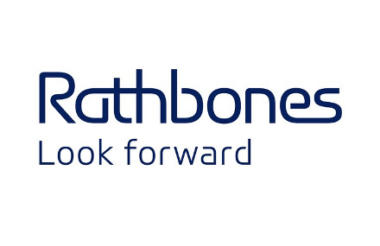Andy Pitt considers two parallel, and often overlapping, approaches to charity investment that trustees should consider.
The two options
An absolute return approach aims to achieve a positive return regardless of market conditions. In this case, the investment manager’s objective is to outperform, by an agreed percentage over a specified (shortish) timescale, either the return on cash deposits or a chosen inflation index. This approach implies an active investment management style.
A relative return approach aims to outperform either a composite of stock market indices or a benchmark peer group of investment funds, again over a specified timescale. This approach often means a less active investment management style, but not passive like a tracker fund (which seeks to mirror rather than outperform its chosen benchmark).
Trustees must choose
Deciding upon an investment approach falls squarely on the shoulders of charity trustees. The decision is often a very fine judgement as both approaches have similar underlying objectives: to generate positive returns in support of charitable activities, while protecting accumulated funds from long-term erosion through inflation.
While investment managers or advisers cannot make the decision, they can help and support trustees in that task by clarifying the respective features of the absolute return and relative return approaches. Reliability of income, short-term volatility in portfolio value, diversification of risk and other issues come into play when comparing these approaches and deciding which to adopt.
Absolute return approach
The goal of a positive return regardless of market conditions means that an absolute return investment manager needs the freedom to invest without unnecessary constraints in whichever assets offer the best returns potential, or at least avoid exposing past gains to reversal.
Active management that exploits a variety of asset classes is a key characteristic of this approach. In response to weak stock market conditions, a portfolio may be tilted heavily towards more defensive assets such as government bonds and cash deposits; hedging techniques may also be deployed. When markets look stronger, the upside potential of higher risk assets, including equities, can be accessed. Portfolio turnover may be higher and income may fluctuate, but these are normal consequences and should not cause concern.
Relative return approach
At the heart of this approach is a benchmark suited to the aims and needs of the investor, and an agreed time horizon towards which performance goals are set. If the chosen benchmark is a composite of market indices, this may comprise flexible target proportions for selected indices that offer geographical and asset class diversity.
Alternatively, the benchmark may be a peer group such as the recently discontinued WM Total Charity Fund Universe. Portfolio turnover is often lower than for absolute return.
Absolute return – key advantages
Direct alignment with investment objective
For absolute return, the target is clearly defined. For relative return, outperforming the benchmark may still mean a negative or disappointing return if the chosen indices have performed badly. In the past, however, equities (often a key component of a relative return strategy) have performed strongly enough to give protection from inflation over the long term, even when income is withdrawn.
Unconstrained mandate
Absolute return investment managers may have scope to cut equity exposure swiftly and use derivatives to hedge risks to achieve returns even when stock markets are in negative mode. Some relative return strategies also permit hedging techniques, but generally not a substantial exit from equities.
Less volatile total return in the short term
The aim of a positive return in all market conditions through diversified investments and nimble reactions to market changes should, with effective portfolio management, make for a fairly consistent total return. A relative return portfolio biased towards equities can be prone to more variable total returns when markets are jittery.
Relative return – key advantages
Less emphasis on manager skill and market timing
Assuming a benchmark weighted towards equities and an expectation (not a guarantee) that the real value of a relative return portfolio will stand up well over the long term, the investment manager is less reliant on market timing for success; in any case, there is less flexibility to stray from benchmark asset allocations.
Tends to outperform in rising markets
During stock market bull phases, relative return portfolios should benefit more, by virtue of substantial equity holdings compatible with benchmark weightings. Absolute return portfolios, on the other hand, are likely to have lower equity holdings to offset the risk of significant losses if caught out by a surprise downturn.
More adaptable to varied objectives
Relative return strategies can be adapted more readily to particular requirements, such as ethical investment or income targets.
Today’s investment climate
We ignore history at our peril, but there are also hazards in placing too much reliance on the past to guide ongoing investment strategy. The remarkable performance of equity investments over a period of many decades reflects factors that may not repeat themselves in the near-term.
The ultra-low UK base rate prevailing since 2009 and the increased market volatility of recent years suggest that the foreseeable future could be challenging. Investors, including charities, are facing a transition to an environment of more modest investment returns and sometimes unnerving volatility. This all makes a properly considered strategy even more important.
No standout winner
So which approach should a charity choose: absolute or relative return? Unfortunately there is no standout choice. Each approach has its pros and cons. It is up to trustees to weigh these against their charities’ objectives, albeit with appropriate guidance from their advisers.
In considering this choice, the areas on which to focus include the trustees’ order of priority for such issues as consistency of total return, diversification of risk, minimising management costs and maintaining portfolio value. While absolute return and relative return approaches can have differing outcomes in the short-term, that performance gap may well narrow over a longer timescale.
Andy Pitt is an investment director and head of charities at Rathbones
Civil Society Media wishes to thank Rathbones for its support with this article









